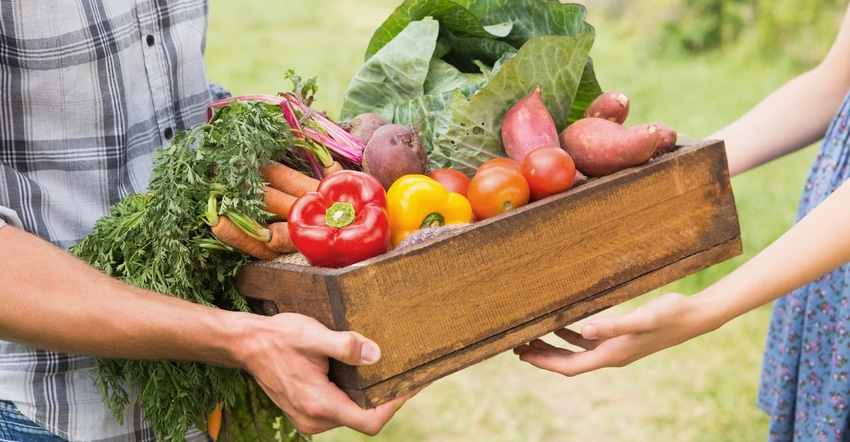January 29, 2021

Consumers are getting closer to the farmers who feed them, but when it comes to security, is that a good thing?
Spurred on by demand for meat in 2020, Americans flocked to local farmers for, well, food. Michigan State University looked at consumer food purchasing habits and how they changed last year. It was no surprise that there was less eating out at restaurants. But researchers predicted there would be an increase in buying local, an increase in home food preservation and more pick-your-own activity. And they were right.
Their analysis found that direct-farm marketers saw an increase ranging from 30% to 50% over 2019. “This increase came through more customer visits and an increase in sales per customer,” their report says. And it predicts the “buy local” movement will continue to increase in 2021.
So, how safe are farmers when they swing open the farm gate?
During a recent virtual Dairy Strong, the Dairy Business Association’s annual conference, Hannah Thompson-Weeman voiced concerns over animal rights activists’ access to farms and warned of the need to protect against it.
Thompson-Weeman is the vice president of strategic engagement at Animal Agriculture Alliance, a nonprofit organization that works to “bridge the communication gap between farm and fork.” She says in the age of activism, people are working to convince consumers that veganism is the best diet. Some resort to extreme measures, going undercover on farms whether as a visitor, customer or employee.
Safety suggestions
While I’m uncertain if there is an uptick in animal activist activity making its way across the country, I believe it is something that has the potential to occur. But whether it is a potential activist threat or a simple consumer interaction, here are six ways to keep all parties safe:
1. Investigate the request. When you receive a request either through Facebook, Twitter or other social media, do your due diligence and search for their profiles. You can tell a lot about a person by posts and photos. Be careful. There are such things as fake profiles. So, search for people with Google or other search engines. Of course, not everything on social media is true, so try an old-fashioned approach: call.
2. Talk to them verbally. Being able to ask questions can not only provide a clear picture of what the customer wants, but also require them to answer quickly. Sometimes that exercise alone can provide you with a sense of the person’s motives.
3. Meet off the farm. Consider delivering farm products to a neutral location — think local gas station or grocery store parking lot. This allows safety for both farmer and consumer to complete the transaction.
If you must have customers, employees or visitors on the farm, Thompson-Weeman offers a more stringent set of guidelines than mine.
4. Control farm access. Thompson-Weeman says to use a check-in procedure complete with visitor identification badges, and if the budget allows, consider visitor escorts while customers are on the farm. Set up times for customers, allowing for one visitor at a time.
5. Lock it down. Make sure areas like office doors, file cabinets and animal product storage are locked down.
6. Screen job applicants. Check references. Double-check applicants who show university or college identification. If hired for seasonal or full-time work, monitor new employees, making sure they leave the farm after a shift and stay away from restricted areas.
Stay engaged
Thompson-Weeman says securing farms is essential, but she advises the animal agriculture community not to forget the importance of setting the record straight.
“Community and influencer engagement needs to be part of everyone’s business plan with a focus on critical topics,” she says. “It’s up to every stakeholder in agriculture to demonstrate their own passion and commitment to continuous improvement in order to maintain consumers’ trust.”
In 2020, farmers got what they asked for — consumers who cared where their food came from. Moving forward, it is important we protect that relationship while keeping safety for all top of mind.
You May Also Like




